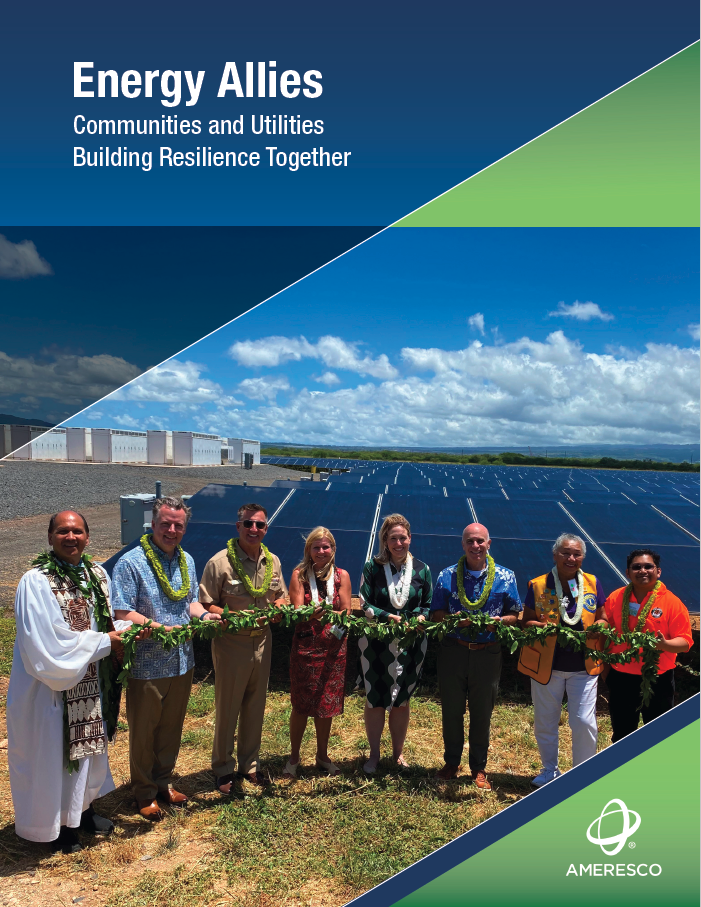
In recent decades, utilities and communities have witnessed how the combination of aging electric grid infrastructure and increasingly extreme weather leads to more frequent and longer power outages. The costs have been steep—up to $150 billion annually for U.S. homes and businesses. Beyond the economic impacts, communities suffer health and safety threats when residents lose heating or cooling, and emergency services become strained.
It is increasingly clear that communities and utilities must strengthen their energy systems to ensure these impacts are minimized or avoided. So, what defines strengthening an energy system? There are a variety of terms used to describe this, but what do they each mean and why are they important to utilities and communities? Understanding the distinctions between these measures is crucial, as they are slightly different but equally important.

“Energy Allies: Communities and Utilities Building Resilience Together,” prepared by Energy Changemakers in partnership with Ameresco, examines how successful partnerships among communities, utilities, and energy service providers can improve the grid and achieve mutually beneficial outcomes. We also explore case studies demonstrating how these types of partnerships have driven meaningful gains in energy resilience to benefit five communities.
Energy projects featured include:
- Kūpono Solar Project
- United Power BESS Installation
- City of Edmundston SOLSTICE Project
- Roseburg Urban Sanitary Authority (RUSA) Energy Savings Project
- Town of Wayland Solar, Efficiency & Resilience Project
Aging grid infrastructure, extreme weather, and rising electricity demand require ambitious responses to ensure energy resilience. As discussed, there are obstacles—financial, regulatory, and developmental— to navigate when taking action.
But these obstacles are not insurmountable. Utilities, municipalities, businesses, and other community groups can tap into the power of partnership to make meaningful progress toward upgrading infrastructure and creating a more resilient grid, unlocking benefits like cost savings and reduced emissions.
